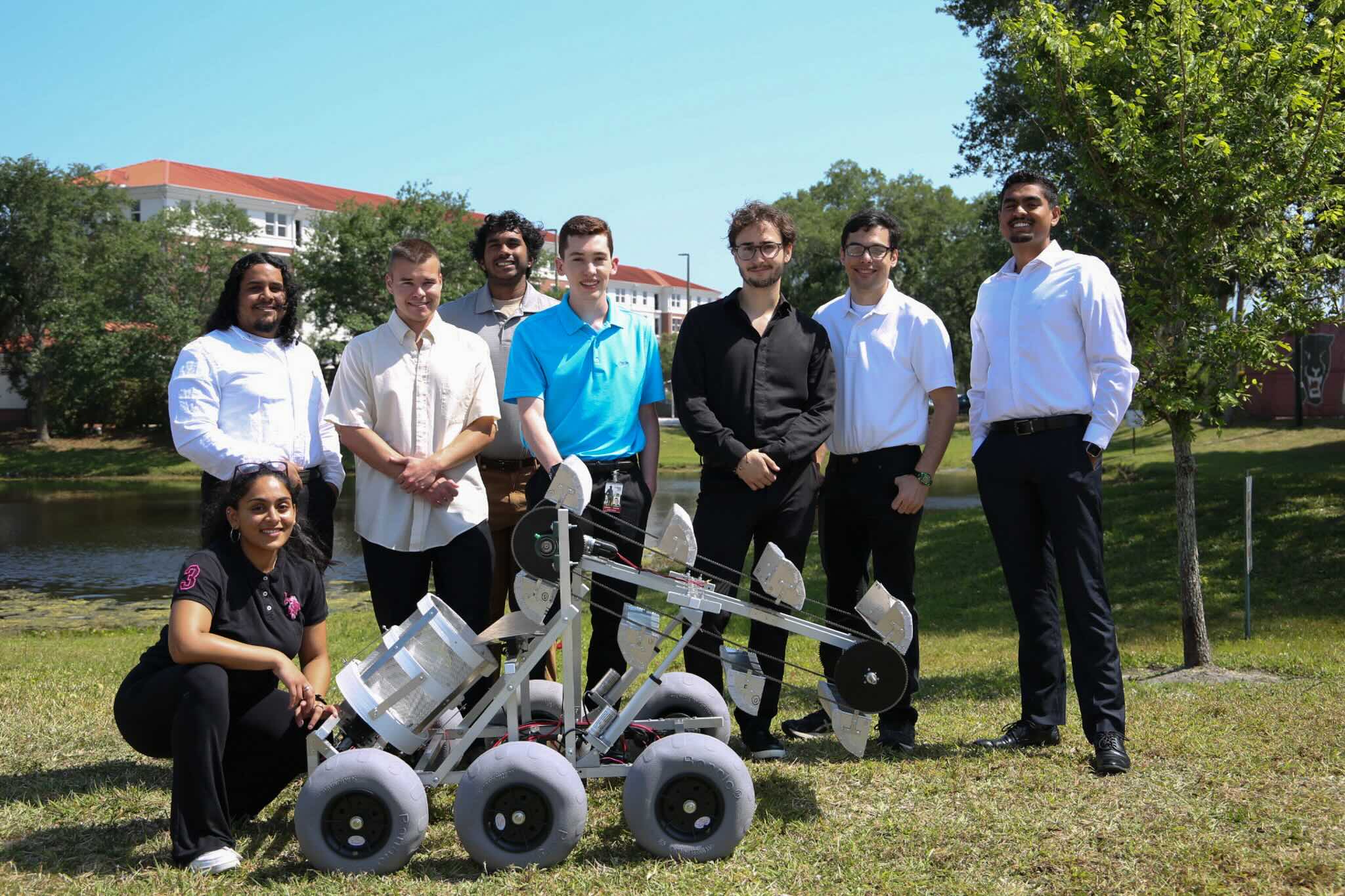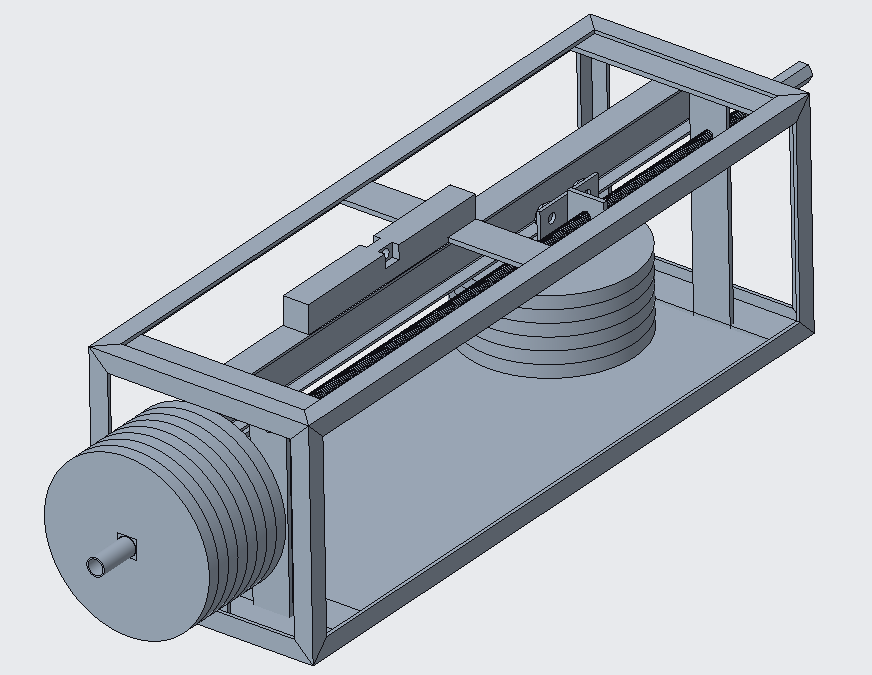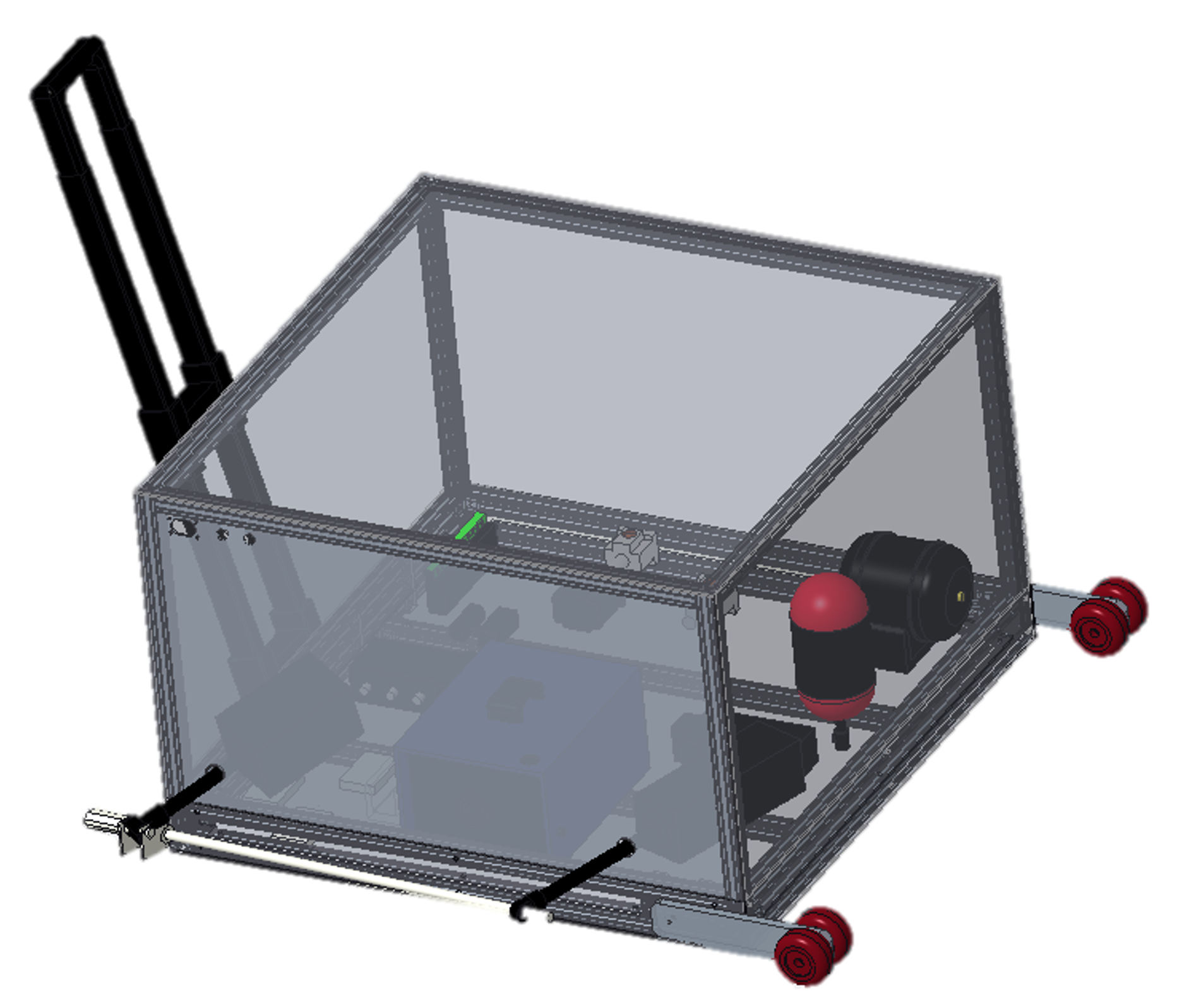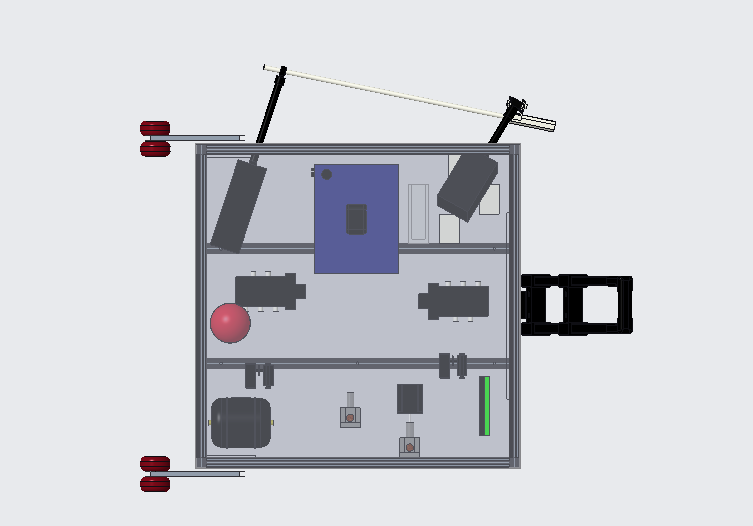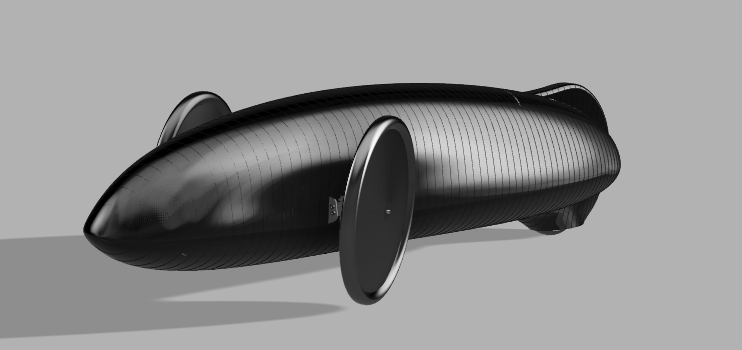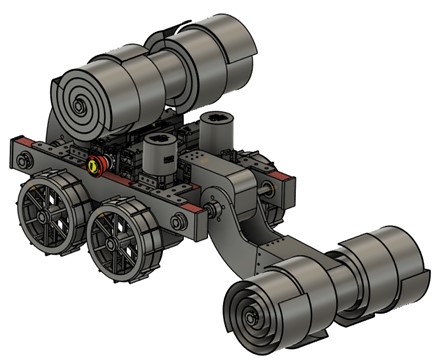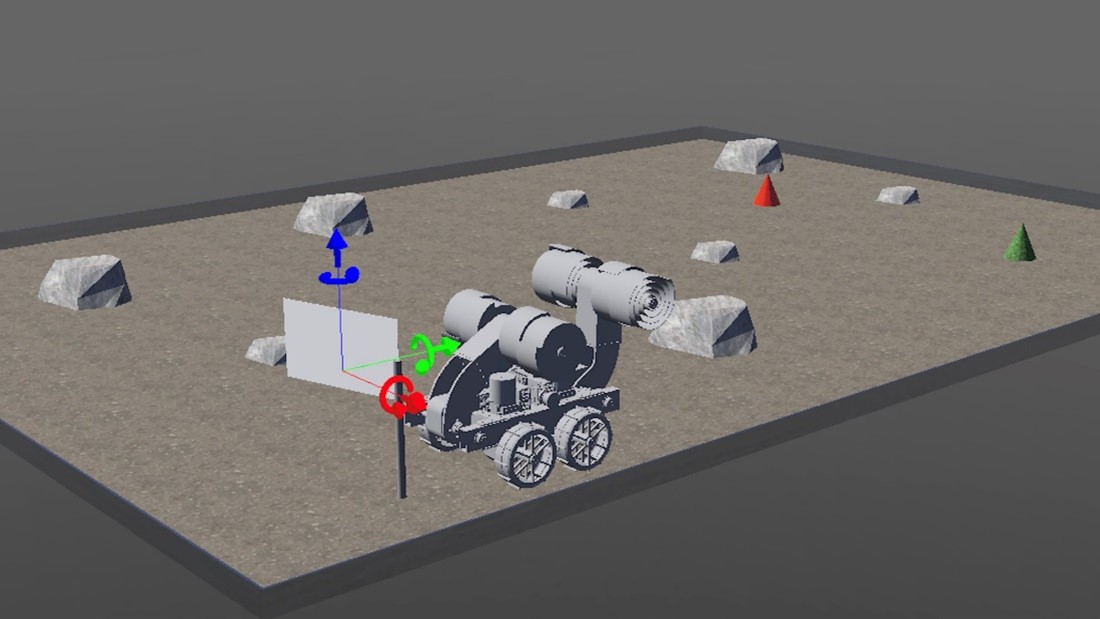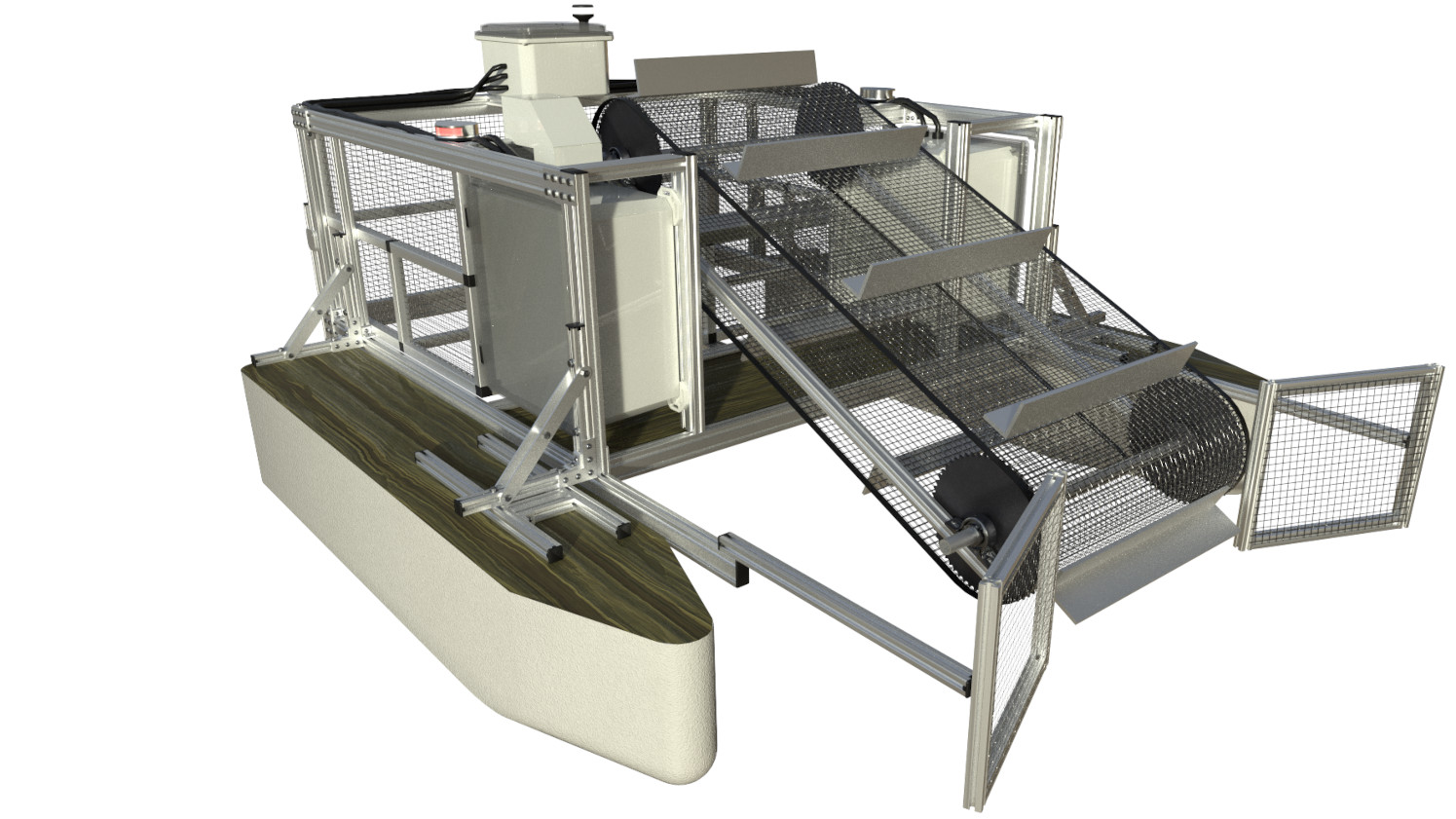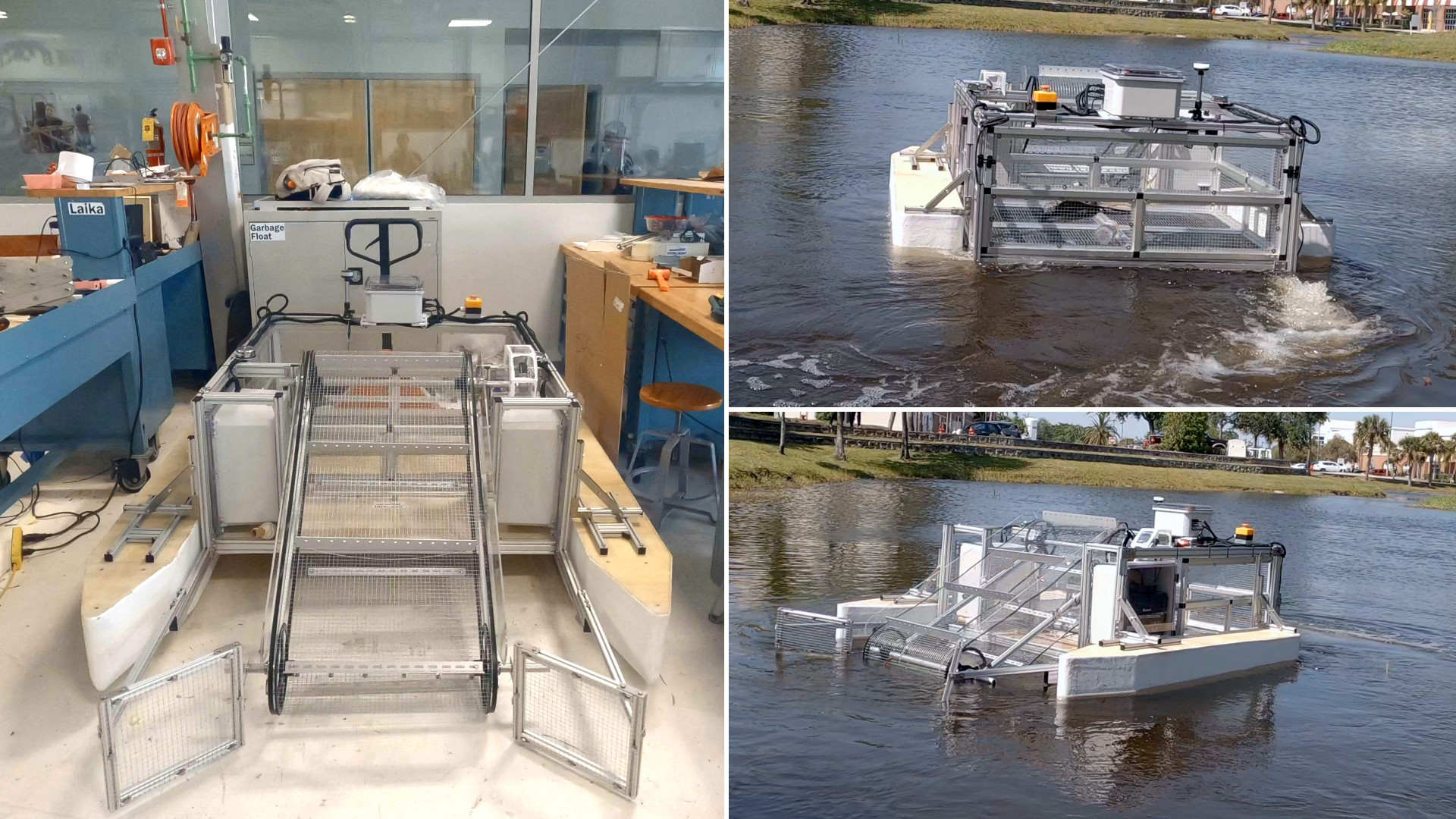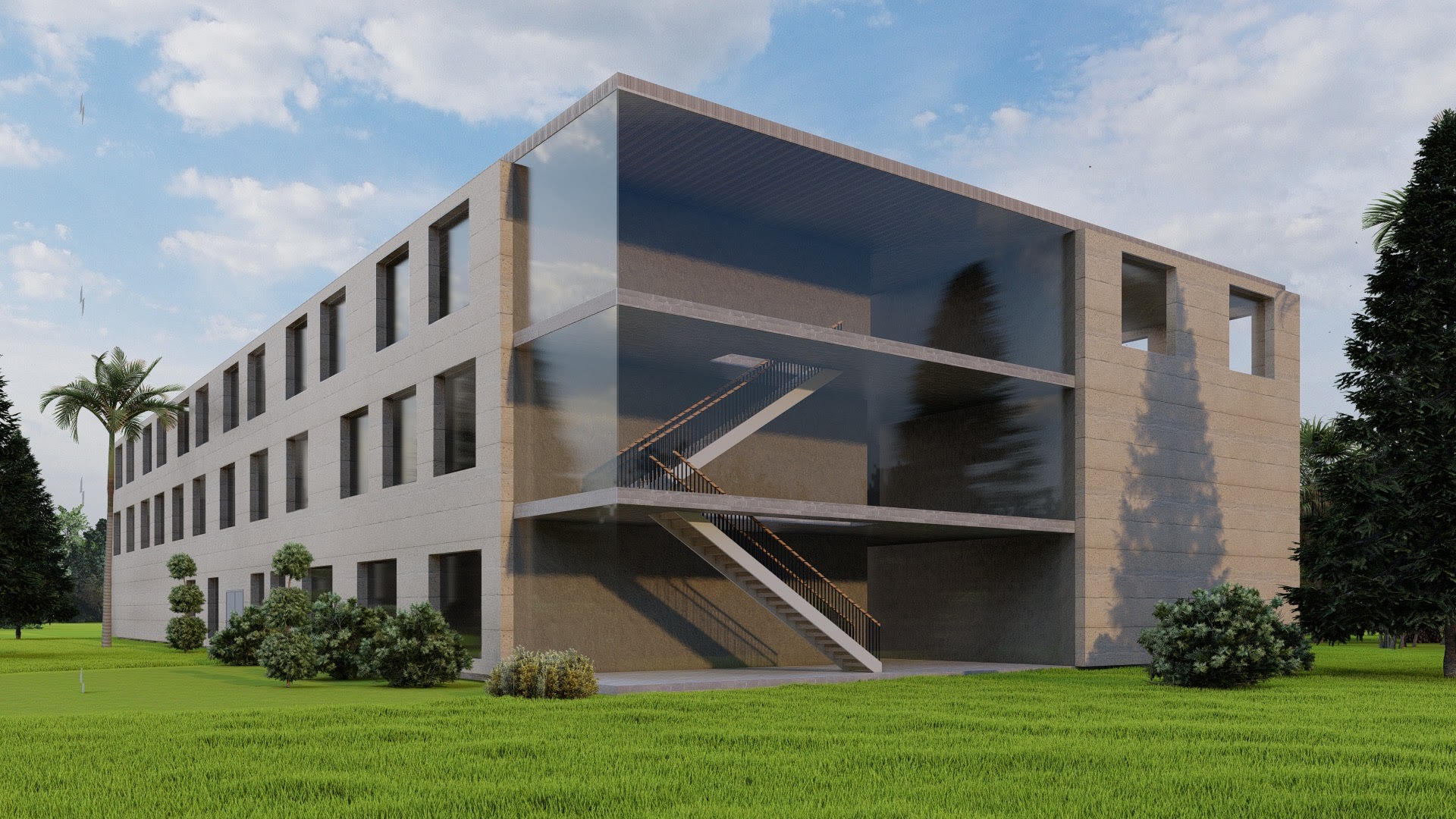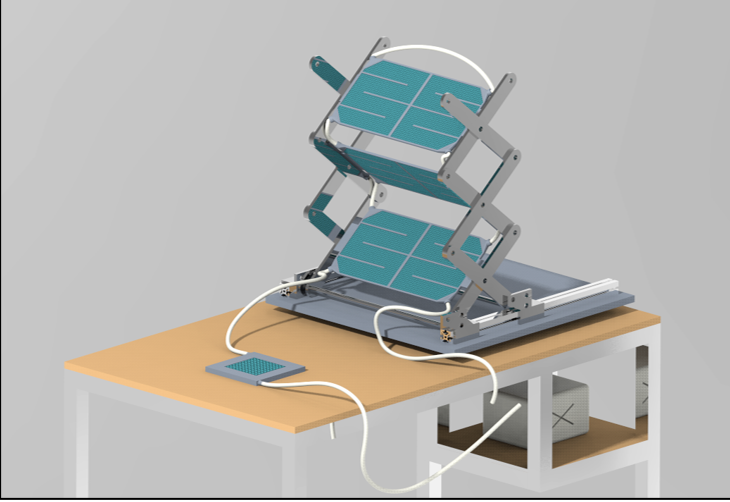
Team Leader(s)
Alexis Linder (Project Manager, Simulation/Electronics Lead), Alexander Larrivee (Systems Engineer, Thermal Lead), Akshay Guptan (Mechanisms Lead)
Team Member(s)
Alexis Linder, Alexander Larrivee, Akshay Guptan, Darian Briody, Dane Capogna, Albert Obodo, Leonardo de la Rosa Ricken, Kaushal Nandagiri, Haolin Wu
Faculty Advisor
Dr. Hamidreza Najafi
Project Summary
Laika has developed an educational apparatus to be used in Florida Tech’s Heat Transfer Laboratory. The main objective of this device is to educate students on thermal management systems used in space. The two space technologies featured are an Active Thermal Protection System (ATPS) and a set of Radiator Panels. In traditional applications, a passive heat shield made of multi-layer insulation (MLI) protects the spacecraft from aerothermal heating from space reentry. This is a costly process as these tiles must be replaced every use, so the team has investigated an active thermal protection system (ATPS) which runs the reserve fuel between the layers of insulation to preserve them and is a reusable system. During a single orbit a space station is subject to extreme temperatures, and it is necessary to regulate that heat for astronaut safety. For this reason, Radiator Panels are designed to reject excess heat from the station to the environment. During the early stages of this project, the team discovered an industry need to optimize lighter, more compact and more efficient ATPSs and Radiator Panels. Specifically, optimizing internal geometries by incorporating Triply Periodic Minimal Surfaces (TPMS) and manufacturing the devices. To combat this need, Laika’s thermal management systems consist of TPMS structure capable of being 3D printed with stainless steel.
There will be two experiments derived from one apparatus. One will be for the ATPS, designated as (1), and the other for the Radiator Panels, designated as (2). The objectives of these lab demonstrations are to have students calculate constant surface heat flux across the ATPS (1), evaluate and compare view factor at two panel orientations (2), evaluate emissivity (2), assess thermal management systems with and without gyroids (1 & 2), observe how flow rate impacts temperature variation (1 & 2), and become familiar with thermal system technologies for space applications (1 & 2). Parameters which can be manipulated to conduct these experiments include flow rate and the panel rotation angle. The various temperature nodes and flow rates are the data collected for students to perform the post-lab assessment. To complement the labs, two manuals providing background information, procedures to conduct the experiments, and assessment material are available for use.
The apparatus configures both the ATPS and radiator panels in a single thermal loop. At the beginning of the thermal circuit, water with an ethylene-glycol additive is heated by a probe in a pre-heater tank. Once the optimal water temperature is reached, the fixed-displacement pump is powered on, and the fluid is pushed through the system through flex tubing. In the fluid line, prior to each thermal management device, is a gate control valve and a flow meter. The gate control valve manipulates the flow rate, and the flow meter measures the velocity. There are five thermocouples: submersed in the fluid line prior to the fluid entering the ATPS, submersed in the fluid line as the fluid exits the ATPS, submersed in the fluid line as the fluid exits the radiator panels, adhered on top of the ATPS, and adhered on the bottom of the ATPS. The ATPS is heated by a heating pad. After the fluid passes through the radiative panels, it is cycled back through the system. Adhesives and emissivity coatings are applied to the radiative panels. External to the fluid loop includes a scissor mechanism and gimbaling configuration. Both devices are mechanisms used on space station(s) to support panel rotation. The scissor mechanism extends and retracts the panels to enhance heat dissipation via view factor. In a real-world application, gimbaling prevents any additional heat sources from overheating the panels by keeping them edge-on-to-the-sun by rotating the scissor mechanism in pitch and yaw orientations. Laika’s apparatus has the scissor mechanism in a vertical orientation and uses light-tracking technology to mimic gimbaling behavior. To further validate the performance of the system, a MATLAB simulation has been prepared demonstrating the ideal trendline temperature behavior across the ATPS and radiator panels.
Project Objective
The project’s objective is to design, develop, and manufacture an apparatus for the Heat Transfer Lab focusing on the application of heat transfer and thermal systems in space. The apparatus is planned to be used in the Heat Transfer lab for teaching and research purposes.
Manufacturing Design Methods
All components in this system were procured or manufactured via laser jetting or 3D printing. Extensive research and analysis were completed for all components within the system.
Laser Cutting & Water Jetting: Support Arms & Brackets for the Scissor Mechanism
Additive Manufacturing: Radiative Panels, ATPS, & Fluid Line Converters (Future Work)
Analysis
The overall system simulation demonstrates the trendline behavior of the thermal performance for the ATPS and radiative panels.
Thermal: Pressure Drop, Radiator Panel Performance and ATPS Performance
Mechanisms: Planetary Gears
Future Works
Post showcase, the team will complete the manufacturing and integration of the radiative panels and ATPS.
The apparatus will be stationed in the Heat Transfer Laboratory to be utilized by the next several generations of Florida Tech mechanical engineering students.
Acknowledgement
A special thanks to Dr. Hamid Najafi for supporting as our faculty advisor, Josh Prdwiecki for supporting as our industry advisor, Dr. Darshan Yadav for supporting as our class professor, the GSAs (Andre, Felix, and Ma) for providing guidance/technical support, and Blue Origin and Innovative Test Solutions for providing financial sponsorship!
![]()



